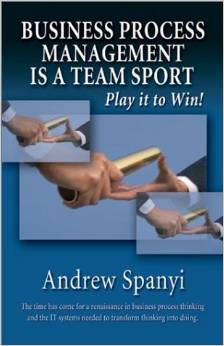The idea for this book was born a couple of years ago when I was struck, once again, by the fact that the existing literature on business process management did not sufficiently address the need to integrate business process thinking with strategy, organizational structure and people issues. At that time, I intended to write the book in a traditional format.
I had almost completed the first draft when I repeatedly heard several senior internal consultants and middle managers complain that when it came to enterprise business process management, their senior leaders simply didn’t get it.
These people spoke with obvious emotion when they told stories of how their senior leaders appeared unable or unwilling to think systemically about the enterprise in business process terms. Instead, they claimed that their senior executives preferred to fiddle with the organization chart, and did not appear to understand the central role of enterprise-wide business process management in achieving sustainable performance improvement. Paradoxically, I had observed these same leaders actively support the systematic improvement of one or two key business processes.
Also, I had observed for some time that most business leaders are intensely competitive. They generally love competitive sports. So it was a bit puzzling why the take-up rate for BPM had not been more rapid and widespread, for business is indeed a highly competitive team sport. Running a business without an enterprise business process plan is analogous to preparing for a big game with only a roster of key players, no play-book and no practice.
On the other hand, I realized that the bulk of the existing literature on business process management does little to smooth the progress of widespread adoption. Unfortunately, much of what has been written on BPM is mechanistic and technical. Several of the works are long and tough to digest, and the links to strategy, organization design, people issues and technology are sometimes lost in the details.
So it’s little wonder that for some leaders, business process thinking may have become to management theory what porridge is to gastronomy. Nourishing – yes, but not particularly exciting.
The more I thought about it, the more I began to suspect that if senior leaders didn’t get it, it was partly because consultants and middle managers couldn’t sell it. The BPM steak was clearly there, but the sizzle was fizzling out.
The ambition of this little book is to address this BIG gap. So, I then decided something more informal and conversational would better serve business leaders who are just too pressed for time to read lengthy, formal treatments of such a vital subject.
Accordingly, this book is designed to present key concepts to senior leaders in an easy-to-read, relevant and, hopefully, entertaining way. It also strives to provide guidance to both external and internal consultants who are in a position to facilitate change or advise business leaders.

















